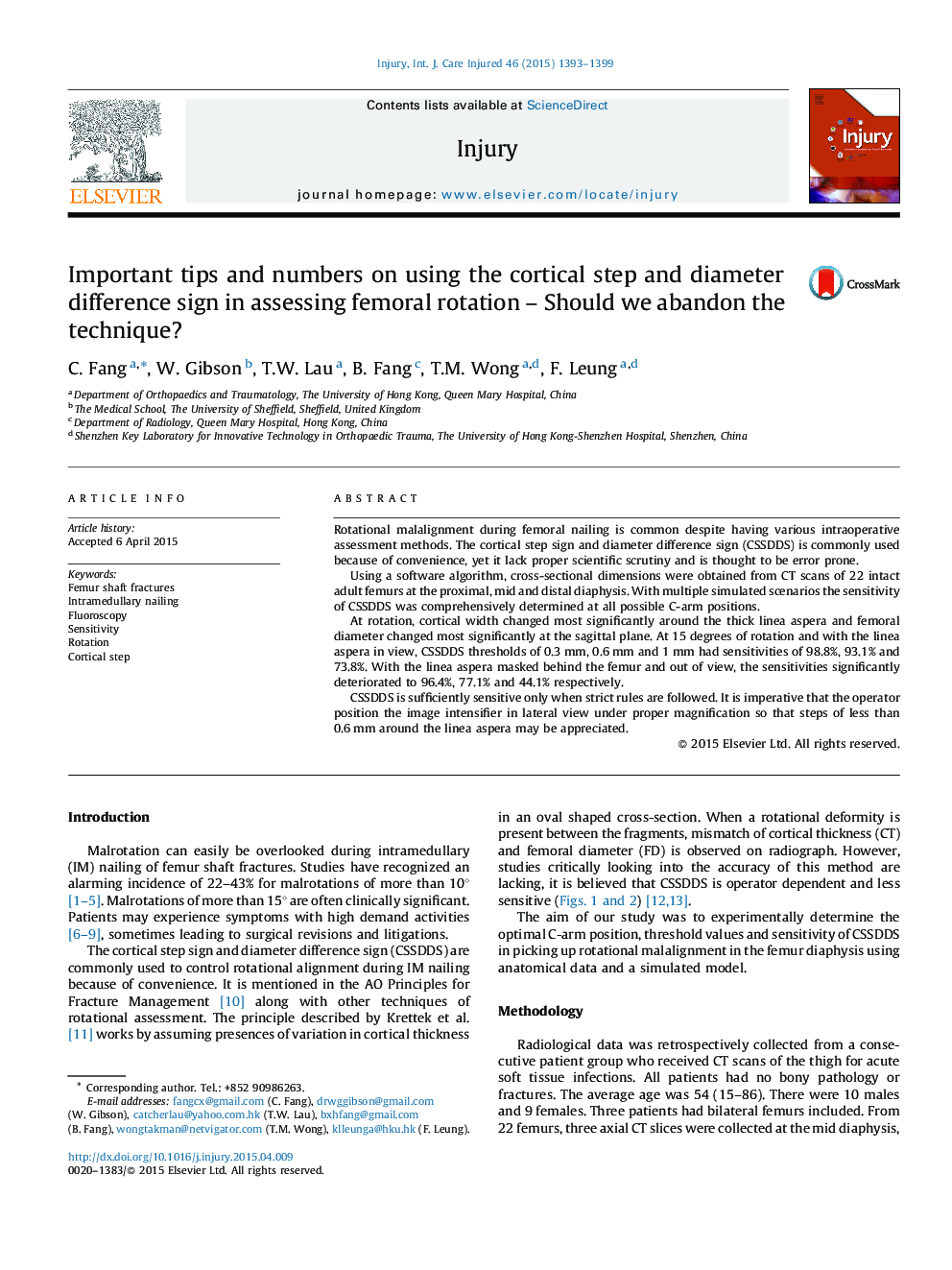| کد مقاله | کد نشریه | سال انتشار | مقاله انگلیسی | نسخه تمام متن |
|---|---|---|---|---|
| 6083342 | 1205989 | 2015 | 7 صفحه PDF | دانلود رایگان |
Rotational malalignment during femoral nailing is common despite having various intraoperative assessment methods. The cortical step sign and diameter difference sign (CSSDDS) is commonly used because of convenience, yet it lack proper scientific scrutiny and is thought to be error prone.Using a software algorithm, cross-sectional dimensions were obtained from CT scans of 22 intact adult femurs at the proximal, mid and distal diaphysis. With multiple simulated scenarios the sensitivity of CSSDDS was comprehensively determined at all possible C-arm positions.At rotation, cortical width changed most significantly around the thick linea aspera and femoral diameter changed most significantly at the sagittal plane. At 15 degrees of rotation and with the linea aspera in view, CSSDDS thresholds of 0.3Â mm, 0.6Â mm and 1Â mm had sensitivities of 98.8%, 93.1% and 73.8%. With the linea aspera masked behind the femur and out of view, the sensitivities significantly deteriorated to 96.4%, 77.1% and 44.1% respectively.CSSDDS is sufficiently sensitive only when strict rules are followed. It is imperative that the operator position the image intensifier in lateral view under proper magnification so that steps of less than 0.6Â mm around the linea aspera may be appreciated.
Journal: Injury - Volume 46, Issue 7, July 2015, Pages 1393-1399
